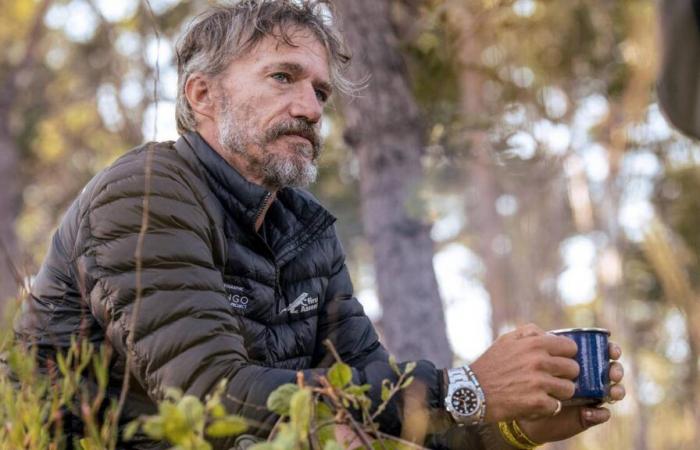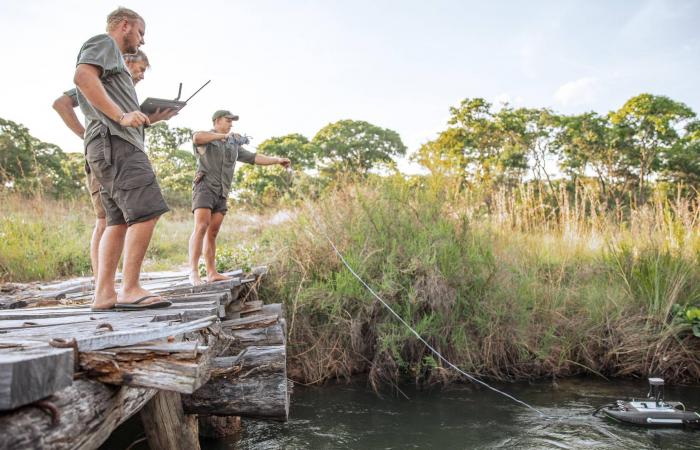One of its latest expeditions is part of the “Great Spine of Africa” program which began in mid-2022. Supported by Rolex’s Perpetual Planet Initiative, this aims to explore the main waterways of the African continent in order to better protect them. For five weeks, Steves Boyes and the 12 members of his team evolved along the Kasaï River, the main tributary of the Congo, the second most important river in the world in terms of flow. The team believes they have discovered that the source of the Kasai River has been misidentified and that it originates in the peat bogs of the Angolan highlands. These wetlands, particularly poor in nutrients, made up of peat act like a giant sponge, capable of retaining up to 25 times its dry weight in water. Like a natural water tower, peatlands store water during the rainy period and release it during the dry season, thus ensuring a constant supply of rivers. According to Steve Boyes, 423 km³ of water, the equivalent of ten times the water consumption of the entire state of California, flows each year from the water tower in the Angolan highlands, where the Kasai River would take its source.
Predicting extreme phenomena
“This means that potentially the source of the Kasai River is only located 20 kilometers from the true source of the Zambezi,” underlines the 45-year-old biologist. The origin of the continent’s 4th river in terms of length could also have been misidentified. It was in their previous expedition that Steve Boyes and his team attempted to determine the true source of this river. “These findings lead to crucial geopolitical implications,” he says. Around 500 million people depend on this region’s water supply. To illustrate the importance of mapping the origin of river basins, the explorer evokes the floods which submerged Kinshasa last January. “Fourteen million people and the port found themselves underwater. It was absolute chaos. Now, thanks to understanding rivers and watersheds, we are learning to predict these kinds of events,” he adds.
The long-standing conflicts in these regions are one of the reasons why they have remained unexplored for so long. In order to reach the source of the Kasai, the expedition crossed Angola, a country riddled with minefields, a legacy of decades of civil war, and the team had to use a specialized armored truck for the first part of its journey. journey. “It was almost a relief to reach the river,” recalls the experienced explorer. But he also insists on the low impact of their movements in preserved ecosystems. “We move around on motorbikes, on foot, pulling canoes. The importance is to work with local populations to achieve these results,” he explains. Because if today, thanks to satellite images, scientists have a slight advantage over the explorers of the 19th or 20th century, “nothing would be possible without the support of local communities, of traditional chiefs who are the heart of our expeditions “, explains Steve Boyes. “Without their trust and without their secrets, we would never be able to access such a source or sacred forest,” he further testifies. This work process requires time from the explorer. “Often, it takes one or two years before someone trusts us,” he confides.
Nothing would be possible without the support of local communities
Understanding the great rivers
This dive into environments so far from any human presence also brings rewards to scientists. “Hippos and monkeys have never seen humans; birds are not afraid of you. It’s extraordinary,” exclaims Steve Boyes. This research is part of the program because, as the biologist details, “it is not just about studying rivers but all the landscapes, forests, mountains and watersheds that create the river itself . » Despite recent years of hard work, the explorer did not intend to stop there. For three years, the size of teams and operations has doubled each year. “We are accelerating the pace because in the face of global warming, it is extremely urgent to understand the great rivers and their tributaries.” This urgency comes from a threat: “We have a unique opportunity to explore these incredibly remote and difficult to access regions so that their importance is recognized and they can be protected before technologies allow their exploitation”, says Steve Boyes.
We have a unique opportunity to explore these very remote areas so that their importance is recognized
The issue is all the more pressing because, as the explorer repeats: “The history of modern man began in Africa and it is in Africa that it will be decided.” Indeed, 100,000 years ago, during the Ice Age, human populations were reduced to a small group living in the Kalahari Desert, near the Okavango Delta. Current discoveries help us understand why Africa still has elephants, rhinos and megafauna. Historically, African biodiversity has survived ice ages and climatic hazards, unlike that present on other continents. It is from there that modern man populated the planet. The explorer also recalls the figures which summarize the importance of this continent. Africa has 1.4 billion inhabitants, as many as China or India. “We have a fertility rate of four. One in two babies born in 2050 will be African. Two thirds of the planet’s unexploited arable land is located on our continent. The decisions we make over the next twenty-five years will determine the climate future of everyone on the planet,” underlines the South African biologist.
But the importance that the biologist has for his continent can be explained by much more than these figures: “The most important thing is that we are discovering that Africa is much more resilient to the impacts of climate change than we think. had considered”.







